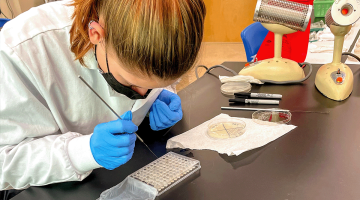UMaine and Colby College partner to improve forest health and monitoring
In a state where the majority of land is covered by forests, monitoring them is critical to understanding and maintaining their health. Forests are constantly changing based on the environment, now more than ever with increased drought conditions in Maine. To understand these changes, there needs to be comprehensive data available to stakeholders in the […]
Read more









